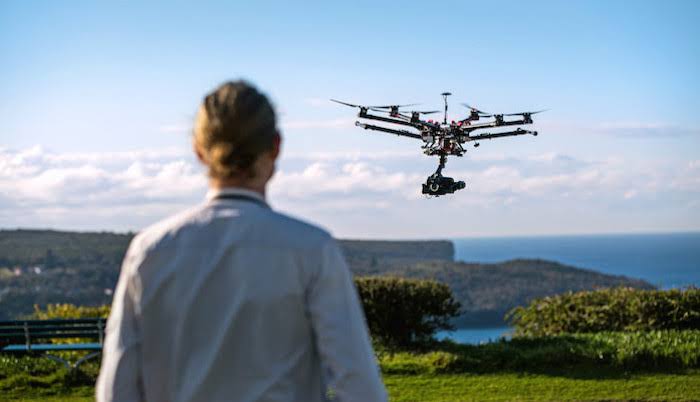Aerial photography has undergone a massive transformation in recent years, largely due to the rise of drones. Once limited to helicopters, planes, or expensive equipment, capturing breathtaking images from above is now accessible to photography enthusiasts, professionals, and industries alike. Drone technology continues to evolve, offering greater precision, better image quality, and more advanced applications. Looking into the future, drones are set to play an even more important role in reshaping how aerial photography is approached and utilized globally.
Advancements in Camera Quality and Imaging
The future of drone technology is closely tied to improvements in camera systems. Drone manufacturers are integrating high-resolution sensors, improved optics, and enhanced stabilization technologies to deliver sharp and professional-grade aerial images.
- Upcoming drones are expected to feature 8K video recording and even higher megapixel counts for still photography.
- Artificial intelligence will enhance image stabilization, reducing motion blur and ensuring clear shots even in windy conditions.
- Thermal and infrared cameras will become more common, allowing photographers to capture images that go beyond the visible spectrum.
These advancements will enable aerial photography to rival traditional ground-based setups, making drones indispensable for both creative and practical uses.
Integration of Artificial Intelligence
Artificial intelligence is one of the driving forces behind the future of drone photography. AI-powered features already help drones with obstacle avoidance, flight path planning, and subject tracking. In the coming years, these capabilities will expand to enhance aerial photography further.
- AI will allow drones to automatically identify the best angles and lighting conditions for photography.
- Smart tracking will enable drones to follow subjects seamlessly, making it easier to capture moving people, vehicles, or wildlife.
- AI-driven editing tools will automatically enhance captured images and videos for instant sharing.
With AI integration, drones will move closer to becoming creative partners rather than just tools.
Longer Flight Times and Battery Improvements
One of the current limitations of drone photography is battery life. Most consumer drones have flight times ranging between 20 and 40 minutes, which restricts extended aerial shoots. However, the future looks promising as manufacturers focus on improving battery efficiency and developing alternative energy solutions.
- New battery technologies will extend flight times significantly, allowing hours of uninterrupted photography.
- Solar-powered drones may emerge, especially for professional applications requiring long-duration flights.
- Lightweight materials and energy-efficient motors will further increase endurance.
These advancements will allow photographers to cover larger areas and capture more diverse shots without frequent interruptions.
Enhanced Connectivity and Remote Access
Future drones will benefit from advanced connectivity options such as 5G networks and satellite links. These improvements will transform how aerial photography is conducted and shared.
- High-speed connections will allow real-time streaming of aerial footage at ultra-high resolutions.
- Remote operations will become easier, enabling photographers to control drones from virtually anywhere in the world.
- Cloud-based storage integration will allow instant uploading and editing of images on the go.
For professionals, this will streamline workflows, while enthusiasts will find it easier to share their creations globally.
Expansion of Autonomous Flight
Autonomous flight technology will redefine how aerial photography is performed. Instead of manually controlling every movement, future drones will handle much of the process automatically.
- Pre-programmed flight paths will allow drones to capture cinematic shots with minimal input.
- Automated panorama and time-lapse photography will become standard features.
- Swarm technology will allow multiple drones to work together to capture complex perspectives.
This shift toward autonomy will make aerial photography more efficient and creative while reducing the learning curve for beginners.
Broader Applications of Drone Photography
The use of drones in aerial photography will continue to expand across various sectors, offering both creative and practical benefits.
- Real estate photography will evolve with immersive aerial tours and 3D mapping.
- Environmental monitoring will benefit from detailed aerial imagery of ecosystems and wildlife.
- Film and media production will rely more on drones for dynamic, cinematic shots.
- Tourism and travel industries will use drones to showcase destinations in visually stunning ways.
As drones become more affordable and versatile, their use in different industries will grow significantly.
Challenges and Regulations
While the future of drone photography looks bright, challenges remain. Regulations will continue to shape how drones are used, particularly in urban environments or near sensitive areas like airports. Privacy concerns and safety issues may also lead to stricter guidelines.
However, advancements in geofencing, automated compliance systems, and AI-based flight restrictions are expected to address many of these concerns. Future drones will likely come pre-programmed with regulatory compliance features, making them safer and more responsible for users.
Sustainability and Eco-Friendly Designs
With growing environmental concerns, the drone industry is also moving toward eco-friendly solutions. Manufacturers are expected to develop sustainable materials and energy-efficient systems to minimize the environmental impact of drone production and usage. Solar-powered drones, recyclable components, and quieter engines will all play a role in making drone technology more sustainable for the future.
Conclusion
The future of drone technology for aerial photography is full of exciting possibilities. Advancements in camera quality, AI integration, battery life, and autonomous flight will elevate the art of capturing images from above. With applications across industries and opportunities for creative exploration, drones are set to become even more central to photography.
While challenges such as regulations and sustainability remain, innovation continues to drive the field forward. For both professionals and enthusiasts, drones are opening new horizons, transforming aerial photography into an accessible, dynamic, and essential part of modern visual storytelling.



